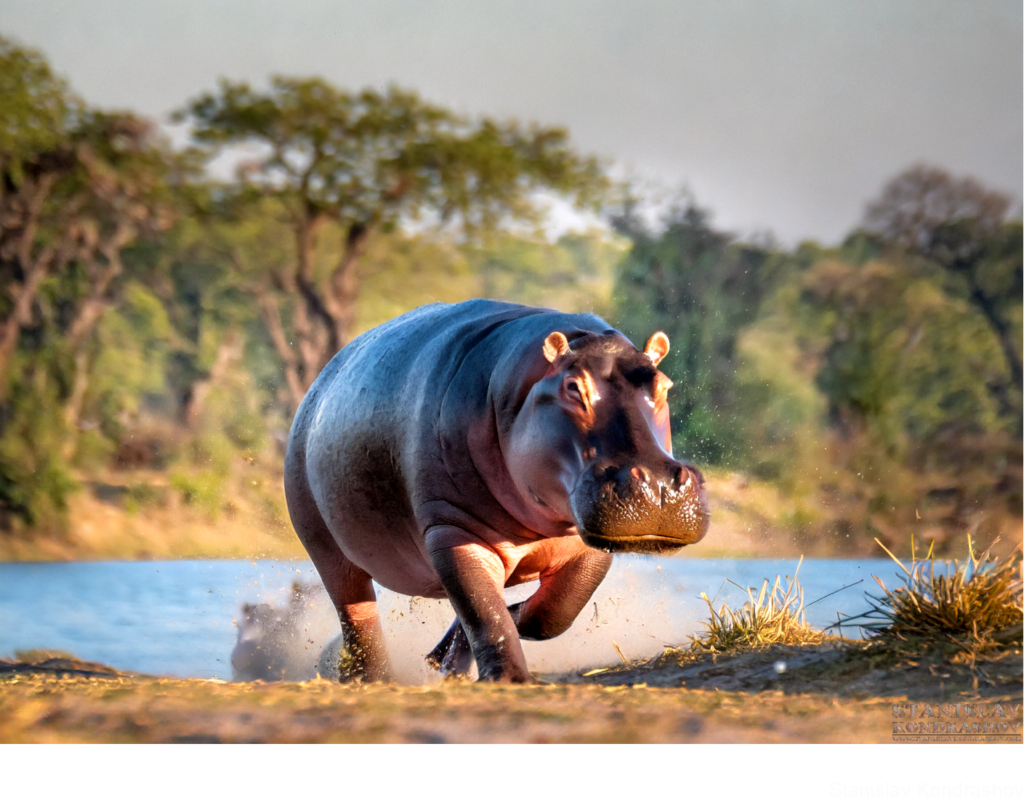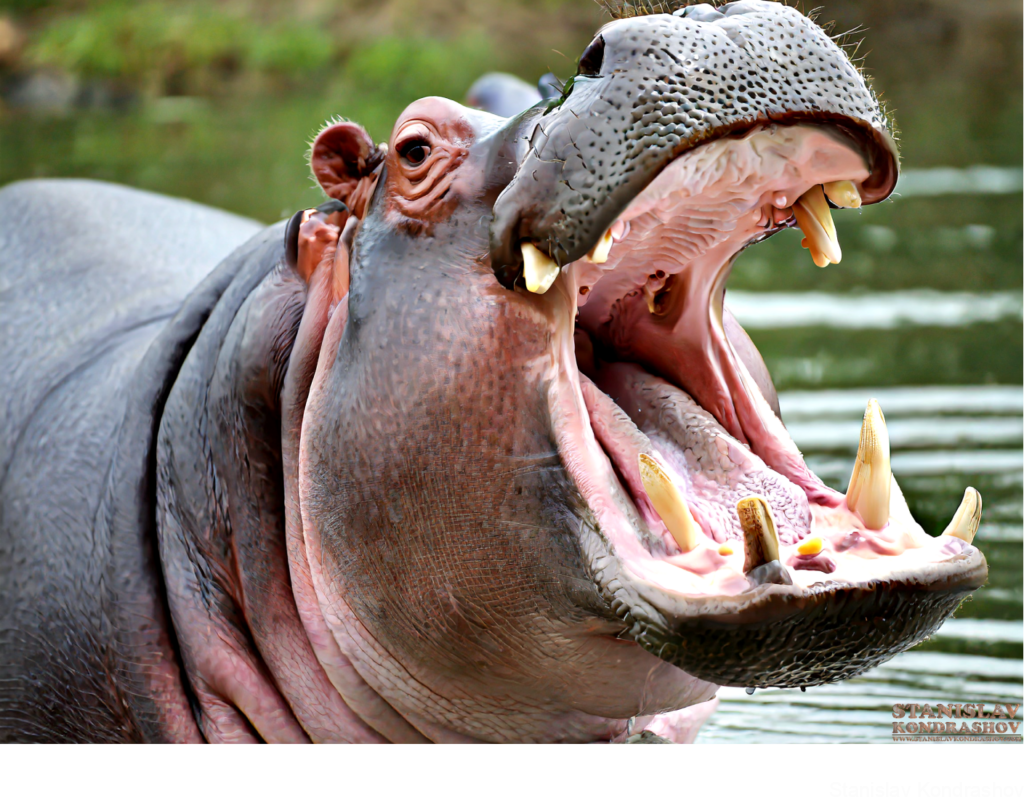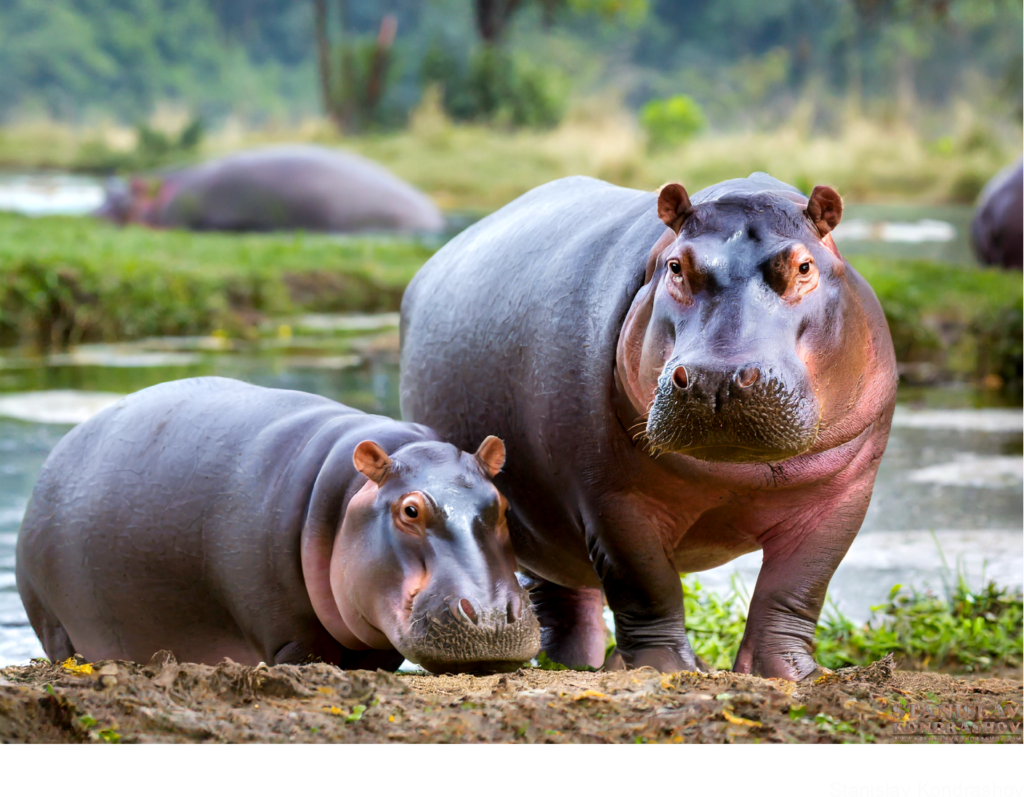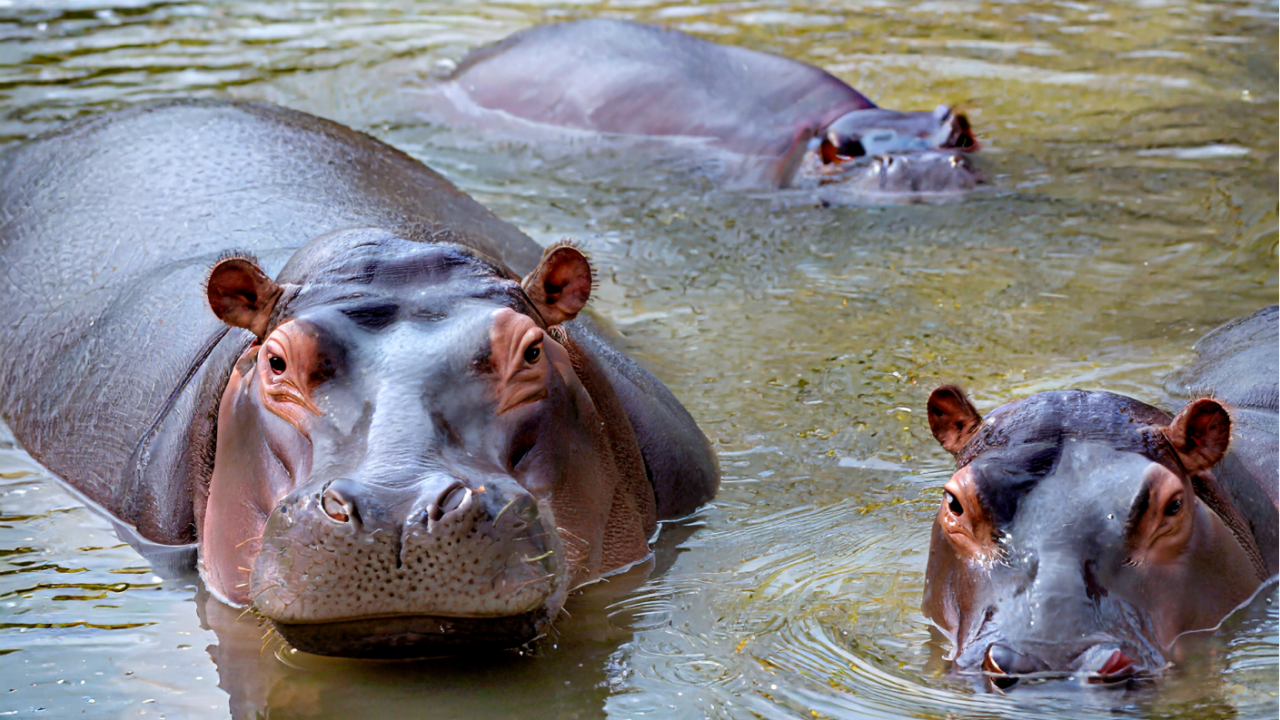Hippos, with their barrel-shaped torsos, wide-opening mouths, and almost comically large bodies, often star in our imaginations as the gentle giants of African waterways. But beneath their seemingly serene and sluggish appearance lies a fascinating and formidable creature, one that commands respect and caution in its natural habitat. Let’s dive into the world of hippos, exploring their size, diet, surprising agility, and why they’re considered one of the most dangerous animals in the world.

The Colossal Size of Hippos
Hippos are among the largest land mammals, only second to elephants and some rhinoceros species in terms of heft. An adult male hippo, or bull, can tip the scales at a staggering 1,500 to 1,800 kg (3,300 to 4,000 lbs), with some exceptional individuals weighing even more. Females, or cows, are slightly smaller but can still weigh up to 1,500 kg (3,300 lbs). These behemoths can reach lengths of up to 5 meters (16 feet) from snout to tail and stand about 1.5 meters (5 feet) tall at the shoulder.
A Hippo’s Plant-Based Diet
Despite their massive size and fearsome jaws, hippos are primarily herbivores, feasting on a diet of grasses. At dusk, they leave the safety of the water to graze, consuming up to 40 kg (88 lbs) of grass each night. Their large mouths and muscular lips are perfectly adapted to mowing the grass, yet they surprisingly eat relatively little for their size—a nod to their slow metabolism and sedentary lifestyle in the water.

Surprising Speedsters
One of the most astonishing hippo facts is their speed. Despite their bulky frame, hippos can run on land at speeds of up to 30 km/h (19 mph) over short distances. This agility is surprising to many and serves as a reminder not to underestimate these giants. In water, they are graceful swimmers, able to hold their breath for up to five minutes while maneuvering with ease.
The Danger Behind the Deceptiveness
Why, then, are hippos considered one of the most dangerous animals in the world? The answer lies in their territorial and unpredictable nature, especially in water. Hippos are responsible for more human fatalities in Africa than any other large animal. Males fiercely defend their stretch of river or lake, and both males and females will not hesitate to charge at boats or humans that they perceive as threats. Their powerful jaws, equipped with large canines and incisors, can crush a canoe or severely injure a person with a single bite.
Moreover, hippos have a somewhat paradoxical relationship with water. They cannot swim in the traditional sense; instead, they propel themselves by pushing off from the bottom. This unique adaptation means they’re often closer to the water’s surface, leading to unexpected encounters with humans.

Coexisting with Giants
Understanding hippos’ behavior is crucial for safely coexisting with them. Recognizing their importance in the ecosystem as mega-herbivores that shape vegetation and create pathways in water for other animals is just as important as acknowledging their potential danger.

The Hippo’s Tale
The story of hippos is a tapestry woven from threads of awe-inspiring power, ecological significance, and a stark reminder of the respect nature commands. These “gentle giants” are indeed gentle in their social interactions and herbivorous habits but are also formidable warriors of their domains, ready to defend their turf and loved ones. In the grand narrative of the natural world, hippos play a role that is as complex as it is captivating, reminding us of the delicate balance between beauty and danger in the wild.
By Stanislav Kondrashov



